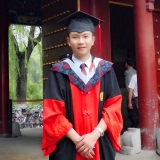Pollution havens create environmental inequality issues. China’s recent policy of directing high-pollution firms to migrate out of its capital, Beijing, offers a case of a pollution haven that was mandated, rather than resulting from firms’ responses to environmental regulation. More importantly, it leads to a question that has been less discussed in previous literature: does a pollution haven strike back? After the highly polluting enterprises moved out of Beijing to neighboring Hebei province, Hebei has been blamed for the continuing poor air quality in Beijing, based on a perception that the pollutants emitted in Hebei are being blown back to Beijing. This paper investigates the existence of a pollution haven in Hebei and quantifies the contribution of Hebei’s emissions to Beijing’s air quality. We find that the proportion of output values and the relative concentration of high-pollution industries in Hebei increased when the large-scale out-migration began, while the indicators in Beijing decreased. We also find higher emissions of enterprises in Hebei than their counterparts in Beijing. Together, these findings indicate the existence of a “manmade” pollution haven. Further, based on high-frequency spatial data, we combine an Autoregressive Distributed Lag model and a Spatial Autoregressive Model and decompose the factors that affect Beijing’s air quality into local and regional transport of air-borne pollutants. We find a significant effect of the neighboring cities’ air pollution on Beijing’s air quality. This indicates that the pollution haven indeed struck back. These findings imply the importance of regional policies to control air pollution.
The pollution haven strikes back?–Evidence from air quality daily variation in the Jing-Jin-Ji region of China
EfD Authors
Country
Sustainable Development Goals
Publication reference
Xu, J., Dong, Y., Xie, L., & Chen, S. (2022). The pollution haven strikes back?–Evidence from air quality daily variation in the Jing-Jin-Ji region of China. Environmental Science & Policy, 138, 105–121. https://doi.org/10.1016/j.envsci.2022.09.014


